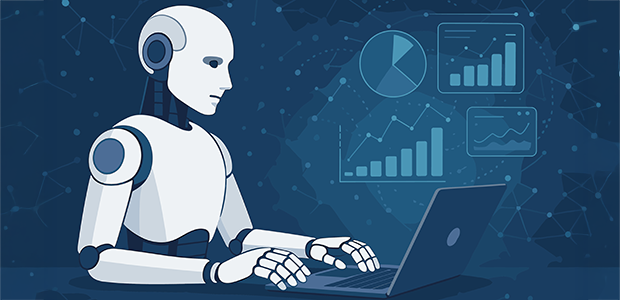
From zero to launch in seconds: the new reality of marketing
We’re in a new era of marketing. What used to take a team of specialists and weeks of production can now be done in minutes by almost anyone. The tools have changed – and if you're not adapting, you're falling behind.
AI isn’t just making content creation faster. It’s forcing us to rethink how we build brands, connect with audiences, and measure success. The pressure to move quickly is real, but the real challenge is staying smart while doing it.
The rollout of image generation inside ChatGPT isn’t just a fun new feature. It’s a line in the sand. For decades, producing high-quality visuals required expensive software, trained designers, and long timelines. Now, the same tool used by a billion people can turn a simple prompt into a full-blown image instantly.
You don’t need a new platform. You don’t need weeks of production. You just need an idea and a keyboard. From intern to CMO, anyone can now generate compelling visuals on demand. That’s not just efficiency. That’s a seismic change.
We’re no longer talking about AI as some futuristic concept or background algorithm. It’s here, it’s centre stage, and it’s changing how creative work gets done. For marketers, the implications aren’t optional – they’re existential.
Speed is the new baseline, not the differentiator
With just a few lines of text, marketers can go from idea to execution in seconds. That’s not just faster – it’s a total rewire of how creative work flows. Mood boarding, brainstorming, rough mocks? They all collapse into one real-time, iterative conversation.
But here’s the catch: once speed becomes universal, it stops being a competitive edge. What matters next is strategy.
The real question isn’t “How fast can we create?” It’s “Are we creating the right thing, for the right audience, at the right time?”
AI can crank out content. What it can’t do is understand your audience’s emotional nuance or define the soul of your brand. That still requires human judgment – and the best marketers will use AI to scale their thinking, not replace it.
Keeping brand identity intact at the speed at AI
One of the biggest concerns I’m hearing from marketing leaders is how to maintain brand consistency when anyone can spin up a visual in seconds.
This isn’t about limiting creativity. It’s about evolving brand governance for a new era. The right systems – clear visual guidelines, pre-approved prompt libraries, integrated review processes – can empower teams while keeping creative output cohesive and on-brand.
The companies that figure this out won’t just avoid brand dilution – they’ll turn consistency into a real advantage. They’ll create more, faster, without sacrificing identity or quality.
Already, we’re seeing forward-thinking CMOs investing in infrastructure that allows for both flexibility and control. That balance is quickly becoming a must-have.
Why creative speed needs smarter feedback loops
AI tools might help you generate more creative content, but that’s only half the equation. The other half? Knowing what’s working.
We’re now able to test dozens of ad variants in a single campaign sprint. But if performance data is still lagging days or weeks behind, that speed is wasted.
The old cycle – launch, wait, analyse, iterate – isn’t fast enough. To keep pace, teams need real-time insights that close the loop between creation and performance.
That means tighter workflows. It means tools that connect creative production, publishing, and reporting in one ecosystem. And it means shifting your mindset: every asset is a hypothesis, every campaign a learning opportunity.
How to stay ahead right now
ChatGPT’s image feature launched a while ago, but we’re only beginning to see its impact ripple through marketing and advertising.
The tools will keep evolving. The expectations will only climb. So here’s what I’d recommend to any brand or agency leader who wants to stay ahead of the curve:
Start experimenting. Give your team the space to explore AI tools. See where they accelerate creativity – and where they might need guardrails.
Use what you learn to shape thoughtful implementation.
Revise your brand playbook. Add AI-specific guidance. Create prompt templates. Define “on-brand” in this new context. Make it easy for anyone on your team to stay aligned, even when moving fast.
Link creation to performance. If your creative output is speeding up, your measurement process needs to do the same. Build real-time feedback loops into your workflow so every test becomes a learning moment.
The pace of change can feel overwhelming, but it’s also packed with opportunity. The tools are here. The tech is ready. The real question is: how will you use them?
The brands that win won’t just be faster. They’ll be sharper. More intentional. They’ll pair speed with strategy to create work that cuts through, connects, and drives real results. That’s the future of marketing – and it’s already started.
This article originally appeared in the May/June 2025 issue of Startups Magazine. Click here to subscribe

